10 Medicinal Herbs to Grow From Seed, Even if You Live in Zone 3
Get a jump on your summer herb garden and plant these 10 medicinal herbs that are easy to grow from seed. You’ll save money and you’ll have the ingredients to make your own medicine.
Here at Joybilee Farm, in British Columbia, we garden in zone 3. Our last frost day is around June 15th. And our first frost of autumn comes around September first. That’s about an 80-day frost-free season in a good year. We do everything possible to get a jump on the gardening season, so when it finally warms up we are ready for planting. These 10 medicinal herbs are helpful for the body and can be grown from seed, even if you live in the North as we do. In fact, when you grow your herbs from seed instead of relying on garden plants from the nursery, you can ensure that you aren’t introducing diseases and insect pests into your little piece of paradise.
I learned this lesson the hard way. One year I brought white flies home from a nursery, hitchhiking on a rosemary plant. Even now I battle white flies in my greenhouse each spring. Another year I brought home Japanese beetles in the soil of some apple trees from a local tree nursery. When possible starting your perennial herbs from seed will save you a lot of pest control headaches and allow you to begin with disease-free plants.
I grow as many of our own medicinal herbs as possible within the limits of our season. Having these herbs to harvest as needed gives us some independence and self-reliance.
Herbs are rich in flavonoids, polyphenols, and other antioxidants making them a great choice to supplement your healthy garden-fresh diet. They can be used for flavouring as well as to help your body work more efficiently. As we get older we need herbs even more.
Of course, call your own doctor or naturopath for serious complaints. This list of medicinal herbs to grow from seed isn’t a substitute for an expert medical opinion personalized for your situation.
Success With Starting Medicinal Herb Seeds
When you are gardening in a difficult climate giving seeds a head-start can make a huge difference in your harvest in a few months. But it isn’t as easy as just shoving a few seeds into some soil, pouring on the water, sticking the pot on a window sill and waiting. If it was everyone would be doing it. It takes a little bit of know-how to get this right. Perennial herbs, especially need some extra help and in some cases some specialized care to get a good start. Most perennial herbs are slow-growing. In areas with a hard winter, they need a good head start before the chill checks their growth. Use these tips for successful herb starts.
- Use fresh seed when you start seeds. If your seed is from a previous year, check your germination before planting. Don’t just plant a lot of seeds in one pot. Your seedling’s roots will get crowded before they even get tall enough to send out their first true leaves.
- Know the correct time for seed starting. Start most herbs 6 to 8 weeks before the last frost date in your area. Slow-growing herbs like sage or chives can be started even 12 weeks before your last frost date.
- You’ll need a seed starting mix, which is lightweight and gives the seeds less resistance as they emerge. You can buy it at the hardware store or the garden store, or you can mix your own.
- Moisten the seed starting mix and get your pots ready. If you are using recycled planting pots, clean and sanitize them thoroughly.
- Plant the seed according to the package directions. The packets will tell you whether the seed needs light to germinate or whether it requires a period of colder temperatures before planting (stratification). Plant seeds according to the individual needs of the seed.
- Make sure you mark each seed tray with the variety you planted. Seedlings look a lot alike in their first month.
- Some seeds require light to germinate. For those seeds, sprinkle the tiny seeds on the soil surface and do not bury them under the soil.
- Some seed requires stratification to mimic the seasonal cold temperatures, perennials would be exposed to in the wild. For those plants, place some loose peat moss in a plastic bag. Dampen it till it is the dampness of a wrung-out sponge. Place the seeds in the peat moss. Place in the fridge or outdoors for a month. Then bring it indoors and plant it in potting soil. Seeds that require stratification, can also be planted outdoors up to 6 weeks before your last expected frost. Mark the ground where you plant them. They will be slow to germinate.
- Some thicker seeds with a tough seed coat require physical scarification to germinate well. You can achieve this by using an emery board or sandpaper and lightly scratch the outer part of the seed. This allows moisture to penetrate the seed more easily and helps germination.
Get exact details from start to finish in our article 15 Easy Steps to Start Seeds the Right Way. Now that you know how to start seeds, take a look at our top 10 medicinal herbs to grow from seed and plan your garden accordingly.
1. Echinacea Purpurea (Zone 3 to 9, perennial)
Also known as Purple Coneflower, this North American Native plant was used by the Native Americans for snakebites, fevers, and wounds. It is a bee plant with long-blooming flowers. Use the roots, leaves, and flowers medicinally to support the immune system. Echinacea plays an important part in natural cold remedies.
Seed Success: Easy to start from seed, you can achieve a good germination rate if you wait to sow the seed until the air temperature is above 70F. It requires light to germinate and benefits from moist stratification. It can take 3 to 4 weeks for the seeds to germinate. In areas with a hard winter, pink echinacea is hardier than some of the floral varieties with white, orange, or red petals.

2. Anise Hyssop (Agastache foeniculum) (Zone 3 to 9 perennial)
Another well-known bee plant, Anise Hyssop is long blooming. The leaves and flowers are used in tea for respiratory and digestive complaints. It is a North American Native plant. Considered a short-lived perennial, expect to replant Hyssop and renew the bed every 3 or 4 years.
Anise Hyssop grows 3 to 4 feet tall in fertile ground and has a one to two-foot spread. Open-pollinated varieties reseed easily so a few plants will keep you going for a long time. Some varieties of Agastache will self-seed, but hybrids are sometimes sterile. Different varieties of Agastache will cross-pollinate and hybridize, so be sure and remove any plants with unwanted characteristics.
Seed Success: Plant the seeds where you want them to grow. Anise hyssop is a needs light to germinate and benefits from moist stratification.
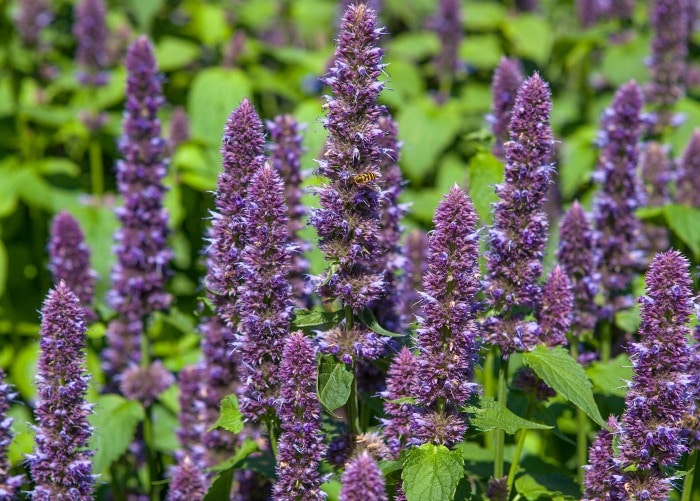
3. Monarda/Bergamot (Monarda didyma; M. fistulosa) (Zone 3 to 9 perennial)
A favourite among beekeepers, this herb blooms throughout the season. The leaves and flowers contain thymol and are used in tea for respiratory and digestive complaints. Use in similar ways as oregano for colds and flu. A North American Native plant.
Seed Success: Monarda needs light to germinate. Just sprinkle it on the soil surface. If you want flowers the first year, start it in pots about 8 weeks before the last frost in your area. You can also create a new plant by root division. This member of the mint family is easy to divide and move around your garden in early spring.
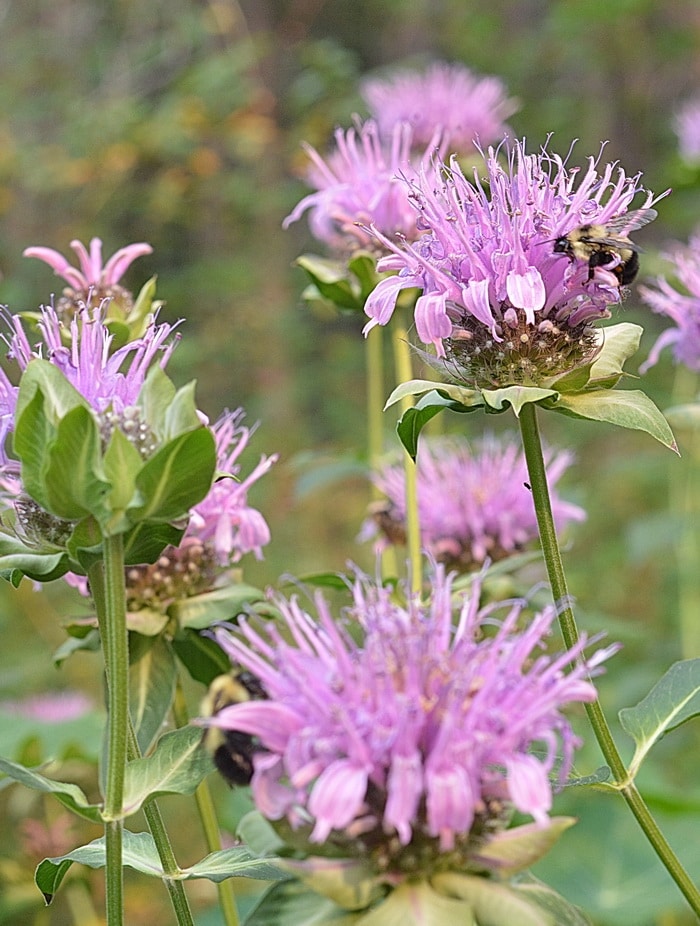
4. Black-Eyed Susan (Rudbeckia Hirta) (Zone 3 to 10 biennial, or short-lived perennial)
The Black Eyed Susan root is used in many of the same ways as echinacea for immune support. Seeds are toxic if ingested. This long-blooming plant provides nectar for bees.
Seed success: plant the seeds indoors 2 weeks before your last frost date. Once they reach 4 inches in height, plant the seedlings out in the garden. They need to be established before the temps get very hot so they can put up with the intense summer heat. Black-Eyed Susan needs light to germinate and benefit from stratification.
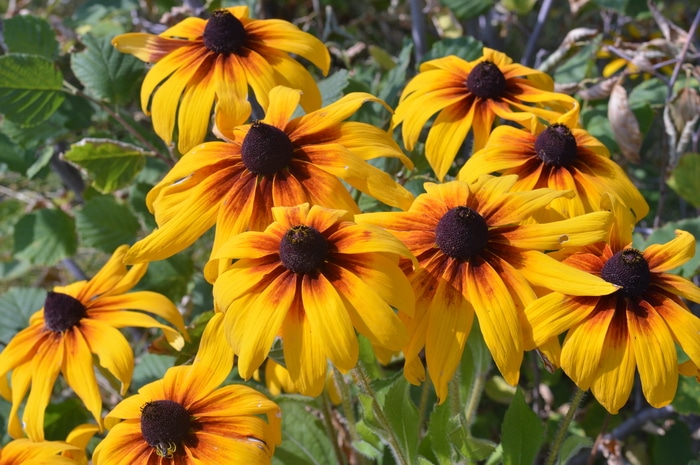
5. Burdock (Arctium lappa) (zone 2 to 10 biennial)
The burdock plant is despised as a troublesome weed and prized for its medicinal properties. It can be invasive, so don’t allow it to go to seed. The root of the first-year plant is used in medicine. Known as a blood purifier, it is useful in liver tonics, anti-cancer treatment, and skin disorders.
Seed Success: Plant seeds 1/4 inch deep rows and then transplant them to larger containers when the plant reaches 4 inches tall. Set outside in rows with the plants about 6 inches apart. Amend the soil with wood chips or compost to keep it from getting compacted, this makes for easier root harvesting. Burdock seeds germinate best after stratification.
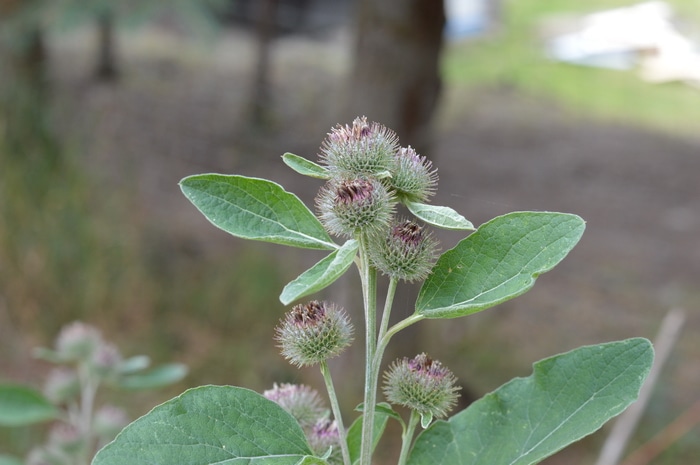
6. Catnip (Nepeta cataria) (zone 3 to 9, perennial)
The plant is a member of the mint family plant and much beloved by cats, the dried leaves can be intoxicating to them. In fact, when you plant it outside you may find your cat sitting directly on the plant. Put it in an out-of-the-way place so other herbs will not be disturbed. The leaves are used in tea and helpful for relaxation and sleep. Catnip is a safe herb for children. (Check out this project for an easy to sew catnip mouse for your kitten.)

Seed Success: The seeds need light to germinate, so plant on the surface of the growing medium. They also benefit from scarification. Plant outdoors where you want them to grow about a month before the last frost date. Here in my short season I’ve had success just scattering the seed on the soil surface in early May. They grow about a foot tall before the killing frost and mine flowered the first year in zone 3. Pinching them back before flowering will encourage the plants to branch and fill out. They will die back in the fall and regrow once the snow recedes the following spring.
7. Red Clover (Trifolium pratense) (zone 3 to 8, perennial)
Perennial clover is useful for respiratory complaints, digestive issues, and immune support. It also makes a great cover crop for the bare spots of your garden. It is considered an anti-cancer. The flowers are harvested and dried at low heat in a dehydrator. When dried at room temperature the flowers can brown.
Red clover is also useful as an herbal supplement. It’s high in minerals: Calcium, Chromium, Magnesium, Manganese, Iron, Niacin, Phosphorus, Potassium, Protein, Riboflavin, Selenium, Silica, As well as: Thiamine, Vitamin A, Vitamin C, and zinc.
Seed Success: Seeds will sprout in 2 to 3 days when exposed to temperatures above 59F. They are very easy to germinate and do not require any special treatment.
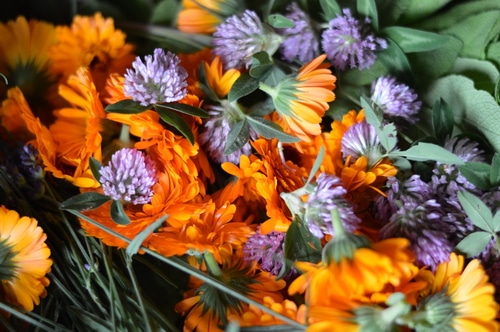
8. Marshmallow (Althaea Officinalis) (zone 3 to 9, perennial)
A perennial plant, marshmallow grows to 4 to 5 feet in height with a spread of 2 feet. The root is harvested for its cooling demulcent properties and used for skin irritation, and the inflammation of the throat, lungs, and urinary tract. The roots can be invasive. Leaves are also used as a soothing tea, tossed into salads, and added to oil and vinegar salad dressing. Get more details about growing marshmallow root in our article.
Seed success: Seeds benefit from scarification and stratification for 1 month before planting. Or plant it outdoors 4 weeks before your last expected frost day. If you want it to flower in the first year, start it indoors 8 weeks before your last frost date.
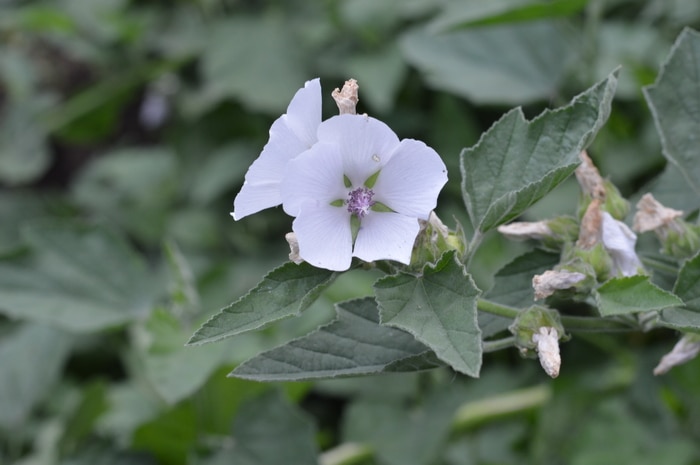
9. Motherwort (Leanurus cardiaca) (zone 3 to 8 perennial)
The plant reached 3 to 5 feet tall and the leaves are used as a bitter herbal remedy. It is a gentle sedative that calms the central nervous system, strengthens the heart, relieves menstrual pain. It is often prescribed to lower blood pressure and calm heart palpitations and anxiety. Should not be used during pregnancy because it is active on the uterus and can bring on menstruation.
Seed success: Plant it outdoors 3 weeks before your last expected frost date. It grows easily. Harvest the leaves before flowering. Once you get Motherwort established, it’s one of the hardiest medicinal herbs to grow. I wouldn’t be without motherwort in my medicinal herb garden.
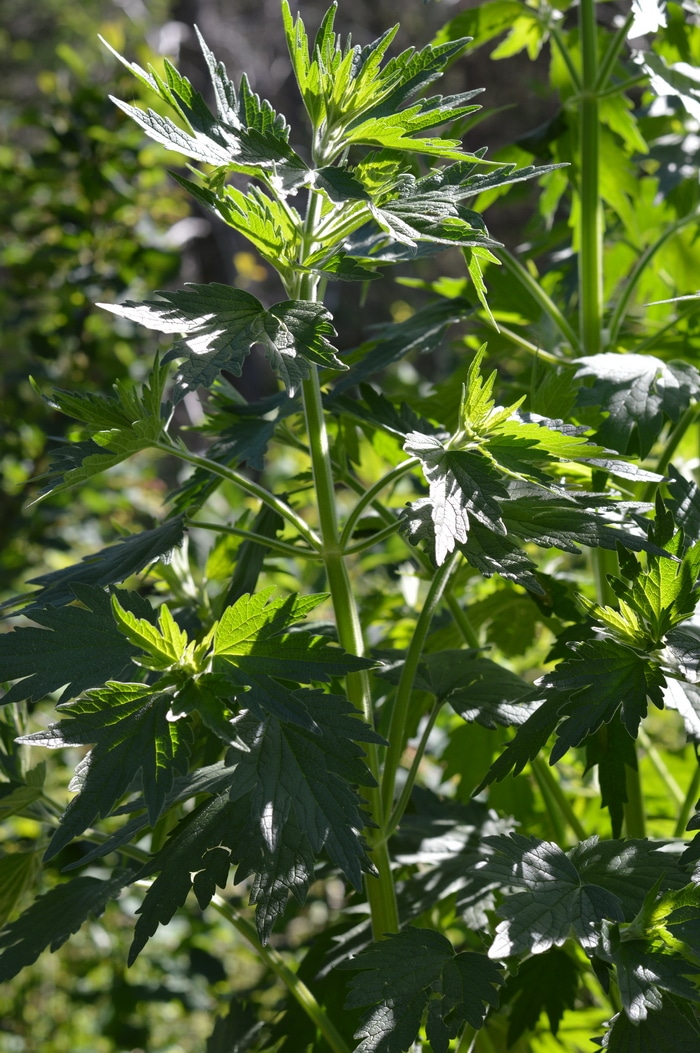
10. Garden sage (Salvia officinalis) (zone 3 to 9 short-lived perennial)
Sage was a sacred herb to the Romans and is helpful for the digestion of fatty foods. The leaves are used as a poultry seasoning. But they also are antiseptic, digestive, and support the respiratory system. Sage helps with cough and congestion due to colds or the flu. That sticky phlegmy cough that hangs on after you get over a cold, is dried up by sage tea. Pick the leaves just before flowers appear and dry them slowly to preserve the best flavour and avoid mold.
Seed success: Slow growing but doesn’t require any special seed treatment before planting. The plants reach their full height in 2 years.
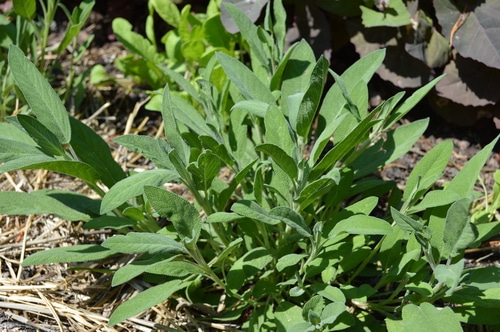
How many plants will you need?
I grow 5 motherwort plants and that gives me substantially more motherwort than I will ever use for my family. But I also grow it for the wild pollinators which cover the plant during August.
Sage is a very slow-growing plant and in my garden, it doesn’t get as robust as in zone 5, so I plant a whole packet of seed each spring, and harvest last year’s sage plant’s leaves. In our short season, I’ve never seen sage produce flowers or self-seed. I grow about 6 marshmallow plants. The plants need to grow for 3 years before harvesting the roots, but you can use the leaves and flowers on first and second-year plants while you are waiting.
Echinacea is another medicinal herb that requires several years of growth before the roots are ready to harvest. The leaves and flowers can be used while you wait. 12 or more echinacea plants are not too many. The wild bees love this North American native flower.
Anise hyssop is robust but short-lived. You’ll harvest leaves and flowers for tea throughout the growing season. 6 plants should give you ample leaves and flowers for tea, especially once it’s established. Plan to add new plants every 3 years or divide the roots to renew the planting.
Monarda is another plant attractive to the bees and full of good uses in the garden. I have about 10 monarda plants. When I gardened on the coast, in zone 7, I only had one and it was all I needed for tea and herbal vinegar. But here in zone 3, the plants are not as robust, so 10 monarda plants give me enough flowers and leaves for tea. I have red and mauve monarda for a variety of both flavour and colour. The hummingbirds prefer the red. The bumblebees relish the mauve flowers.
Clover is low growing and you’ll need a substantial number of plants to get enough flower heads for tea. So plan on scattering red clover seed around fruit trees and on the edge of your vegetable garden. Red clover is attractive to bees and other pollinators. It is also a nitrogen fixer and helps other plants grow by making nitrogen in the soil more bioavailable for other plants.
Your turn:
Which medicinal herbs will you plant this spring?




I grow Anise Hyssop, Marshmallow, Lady’s Mantle, Calendula, Lemon Bee Balm, Yarrow, Sage, Rosemary, Holy Basil, and Blue Vervain for medicinal use. I just discovered your website and am thrilled by all the wonderful information you provide! Thanks for the great ideas! I am adding catmint and oregano to my list of seeds to buy. I live in Northern Minnesota zone 3b so am excited to finally find information that is relevant to my very short growing season!